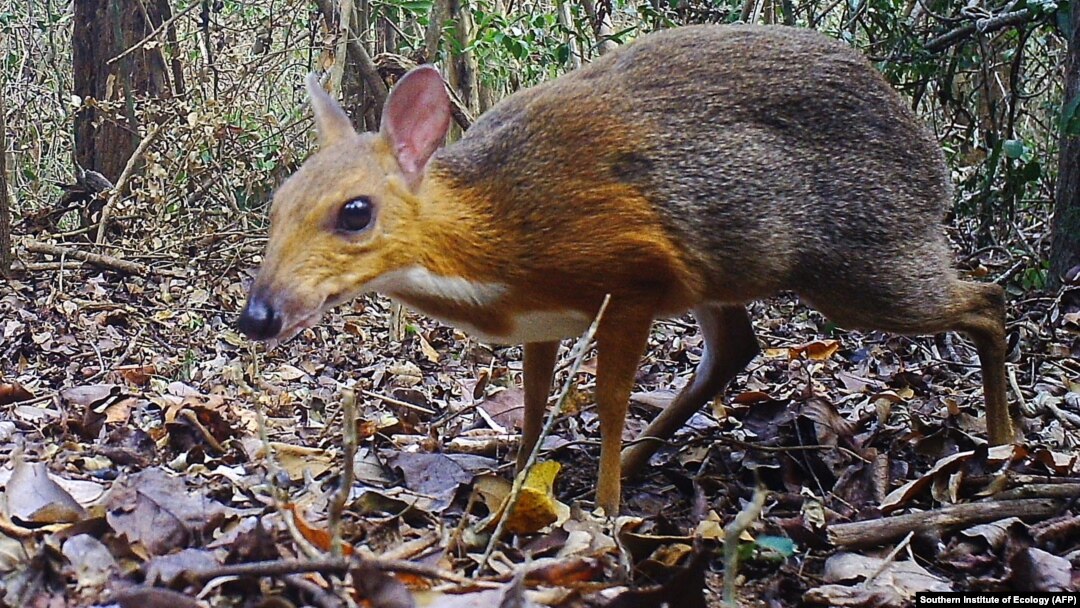It was a year most of us would like to forget, but 2020 did have some powerful good-news stories that got buried under the grim headlines.

Part of the massive stainless-steel container that will enclose the International Thermonuclear Experimental Reactor arrives at its facility in southern France in August.
New Energy Source: Nuclear Fusion Moves Toward World-Changing Reality
The sci-fi dream of clean nuclear fusion reactors that could electrify future cities took a step toward reality in August when French President Emmanuel Macron launched the assembly stage of the International Thermonuclear Experimental Reactor (ITER).
Nuclear fusion could revolutionize the world's energy supplies. Unlike the Hiroshima-leveling power of nuclear fission, in which atoms are split into smaller fragments, nuclear fusion occurs when superheated particles in a vacuum are forced together to create a larger atom. The blast of energy that results is nearly free of emissions and effectively unlimited. Part of the tiny amount of fuel needed for nuclear fusion can be taken from seawater.

The ITER facility in France’s Provence region
The ITER project was first pitched by Soviet leader Mikhail Gorbachev to U.S. President Ronald Reagan in 1985. It has since signed on various international partners and chewed through vast sums of money. ITER expects to have the first hot test of its reactor in 2025.
The sluggish pace of the project has inspired other, more nimble outfits to experiment with their own versions of the donut-shaped fusion chambers first envisioned by Soviet scientists in the 1950s. One way or another, one possible answer to the world’s energy problems appears to be just around the corner.
Chernobyl Fungus Fends Off Space Radiation
A man looks at the fungus-coated control desk of the Chernobyl nuclear power plant.
Researchers at Stanford and North Carolina University published a paper in August that shows a fungus that grows in Chernobyl may be used to help astronauts get to Mars and live there safely.
The study was released after scientists venturing inside the Chernobyl nuclear plant noticed an evil-looking black fungus was thriving inside the irradiated disaster zone.
Further investigation showed the "extremophile" fungus was able to convert radiation into the energy that it needs to flourish in the dark recesses of Chernobyl. This appetite for radiation gave one researcher the idea to send samples of the fungus to the International Space Station (ISS) for further study.
Cladosporium sphaerospermum, the same fungus that flourishes inside Chernobyl, being grown in a petri dish
One of the biggest obstacles to getting humans to Mars is the cosmic radiation astronauts soak up while floating outside Earth's protective atmosphere, so NASA was keen to see how the radiation-hungry fungus would behave in space.
Inside the ISS, a 1.7-millimeter-thick “lawn” of Cladosporium sphaerospermum was laid above a radiation detector. The fungus was shown to stop around 2 percent of the radiation zipping through the ISS. Although that finding seems modest, the 2020 paper caused a buzz by concluding that if the layer of fungus was thickened to 21 centimeters it could “largely negate” the cosmic radiation believed to be harmful to astronauts.
The conclusion seems especially promising since the mold could be grown on Mars or even aboard a spaceship while en route to the "red planet."
Pakistan’s 'Tree Tsunami' Carries Workers Through Pandemic
Pakistani laborers plant trees along a road shortly before the coronavirus pandemic struck.
Some 60,000 of Pakistan’s laborers left idle and, in some cases, desperate from the coronavirus lockdowns have branched out to a new line of work: tree planting.
An initiative to reforest vast tracts of Pakistan with 10 billion trees from 2018 to 2023 was wound down -- along with much of Pakistan’s economy -- when the pandemic took hold in the country. But the government's decision to pause the epic tree-planting project was swiftly reversed and furloughed workers were brought in to keep the project on schedule.
Workers planting trees outside of Karachi
Workers who were facing starvation are now being paid small daily wages of around 500 rupees ($3) to continue the ambitious tree-planting initiative. One of the professional tree planters told Reuters: "Due to the coronavirus, all the cities have shut down and there is no work. Most of us daily wagers couldn’t earn a living." But the man said the tree-planting initiative means "all of us now have a way of earning daily wages again to feed our families."
Painted Wind Turbine Dramatically Reduces Bird Deaths
A wind turbine having a blade painted black at the Smola wind farm during research on bird strikes
Researchers in Norway have concluded that there appears to be a simple solution to the thousands of birds being killed each year by the spinning blades of wind turbines.
A paper published in July based on several years of research at the Smola wind farm in Norway showed a massive drop in bird deaths after a single blade from several of the wind farm's turbines was painted black.
One of the most emotive arguments against wind turbines is the slashing of flying birds. Birds appear to be particularly vulnerable to "motion smear," which renders spinning objects as a harmless blur, especially on overcast days when white turbine blades blend into the sky. At the Smola wind farm, several white-tailed eagles were thwacked by turbine blades before researchers were dispatched to try to end the raptor killings.
Technicians inspect wind turbine blades at Saint Nazaire, France, in 2012.
After the Smola turbine blades were painted black, bird deaths -- according to researchers using dogs to find bird carcasses -- dropped by 70 percent. The paint apparently makes the swooping blades more visible to birds, who can then veer away from the danger.
Much research remains to be done to ensure the results are not "site- and species-specific." Other wind farms in South Africa and the Netherlands are preparing to replicate the study.
Vietnam Cracks Down On Illegal Wildlife Trade
A worker holds a pangolin inside its enclosure at Save Vietnam's Wildlife, a group that runs a pangolin conservation program, in September.
In the wake of the coronavirus pandemic, which many believe began in one of China’s notoriously cruel “wet markets,” Vietnam has launched a crackdown on the illegal animal trade. Vietnam is well-known for its wildlife markets and as being a hub for the world’s illegal animal trade.
A stunning headline carried by major media outlets in July declared that Vietnam had "banned" its wildlife trade to lessen the risk of future disease outbreaks. Experts inside Vietnam say those reports are misleading and that a government edict simply called for a genuine enforcement of existing laws. But the pandemic-inspired directive appears to be more than just lip service.
A Vietnamese mouse deer -- one of the country’s critically endangered species -- is seen as it was photographed by a camera trap in 2018.
According to a conservation NGO, wildlife-trafficking seizures in Vietnam have increased 44 percent in the past two years, and in 2020 some 97 percent of those seizures resulted in smugglers being arrested. Prosecutions of criminal trading in wildlife has also reportedly increased dramatically in the southeast Asian country.


